
KINGSLEY HOLGATE'S AFRIKA ODYSSEY EXPEDITION


The shabby customs and immigration post at Nimule still stands from when we first visited South Sudan in 2011 by boat and Landrovers to join the colourful independence celebrations of the newest country on Earth. It was still the same in April 2022, when as part of the Defender Transcontinental Expedition from Cape Agulhas to Nordkapp in Norway’s Arctic Circle, we’d had to divert around the civil war in Ethiopia and cross South Sudan to reach the Republic of Sudan, as part of that 30-country journey. This time, however, we are bound for Badingilo and Boma National Parks, as part of the Afrika Odyssey expedition.
Nothing’s changed, except that, 20 months later, the road to Juba has disintegrated even further into a nightmare of big aid-delivering trucks, ditches, potholes, troughs and worn pieces of string stretched across the dusty track at bribe-hungry roadblocks. Fortunately, two armed soldiers are squeezed into the heavily loaded Defenders to pave the way.
Renowned African explorer Kingsley Holgate and his expedition team from the Kingsley Holgate Foundation recently set off on the Afrika Odyssey expedition – an 18-month journey through 12 African countries to connect 22 national parks managed by African Parks. The expedition’s journey of purpose is to raise awareness about conservation, highlight the importance of national parks and the work done by African Parks, and provide support to local communities. Follow the journey: see stories and more info from the Afrika Odyssey expedition here.

Five hours later, we squeeze through swarms of tuk-tuks, motorbikes and water tankers to cross the old Bailey bridge and enter the heaving chaos of Juba, the capital of South Sudan. Like before, we head for Afex River Camp on the banks of the Nile. The ancient, rusting steamer wreck is still marooned in the middle of the mighty river, racing in flood from heavy rains in Uganda towards the Sudd and through the civil war chaos of the Republic of Sudan to reach Egypt and its delta on the Mediterranean coast. As big metal gates clang shut on the squalor and chaos of Juba, we’re welcomed like long-lost friends by Carrie and her team, who warn us to watch out for over-ripe mangoes falling like missiles from the enormous trees that shade the camp. The giant rhino statue still stands in the grounds, reminiscent of when the famed northern white rhino became extinct.

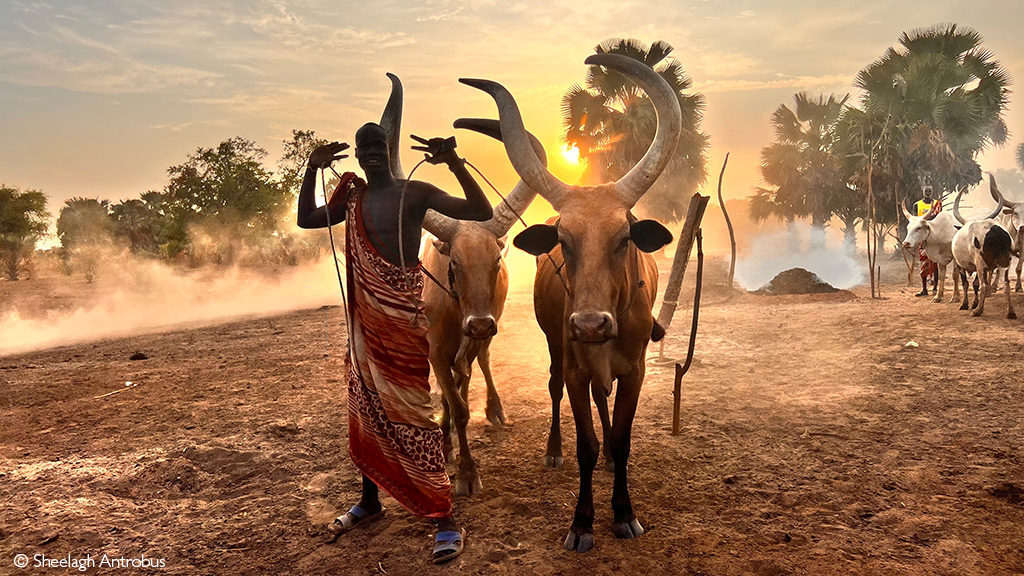
Early next morning, we meet David Simpson, park manager for Badingilo and Boma National Parks – numbers 14 and 15 of this Afrika Odyssey journey to reach all 22 African Parks-managed protected areas across Africa. David is recently transferred after 12 years at Chinko in the Central African Republic – still to be reached by this expedition. “When I arrived at Chinko, preserving its primates, giant eland and bongo, 100-pound Goliath tiger and Nile perch, and savannah and forest elephants were African Parks’ biggest challenge. I never thought I’d be here in South Sudan, tackling an even greater task,” says David.
 DID YOU KNOW that African Parks offers safari lodges and campsites where 100% of tourism revenue goes to conservation and local communities? You can plan and book your African Parks safari by clicking here.
DID YOU KNOW that African Parks offers safari lodges and campsites where 100% of tourism revenue goes to conservation and local communities? You can plan and book your African Parks safari by clicking here.
We’re dumbfounded by the size, scale and complexity of what David and his team are taking on. Badingilo and Boma National Parks make up nearly three million hectares. Still, they’re only the beginning of a greater 200,000 square-kilometre ecosystem, which stretches northwest through the Jonglei corridor to the White Nile and is home to the world’s largest land mammal migration. Millions of antelope, including white-eared kob, Mongalla gazelle, tiang and Bohor reedbuck merge in Badingilo during the wet season for breeding before migrating in a vast semi-circle north to the Sudd and east towards Boma and into Gambella National Park in Ethiopia.
Sitting in front of computer screens in the data room, a team of young students from Juba University are meticulously studying thousands of aerial photographs, their movements a blur as they record every single animal in each image. It’s the first comprehensive aerial survey of South Sudan’s annual migration. David tells us the students are also training an AI system to do future counts – harnessing the power of 21st-century tech for conservation needs.

Stepping into the Ops Room, David and control room operator Biar Monychol tell us they’ve collared a number of the animals, including elephant and lion, so their movements can be monitored on the EarthRanger programme. “This could be the biggest wildlife story of our time,” David says. “This migration is bigger than the Serengeti’s wildebeest migration. At times, the animal density is so great that children from the Dinka, Murle and other tribes who’ve lived in this landscape for centuries can spear them from the doorways of their tukels (homesteads). But can you imagine the challenge of preserving this migration from the ever-increasing danger of commercial, large-scale, organised poaching – alongside growing threats of illegal logging and charcoal production?”
Decades of instability in South Sudan have severely impacted the lives of local people living in and around Badingilo and Boma National Parks. So, in 2022, to ensure the long-term ecological, social, and economic sustainability of this globally important landscape, the South Sudan government signed a 10-year agreement with African Parks with the mandate to protect this vast area for both wildlife and communities.
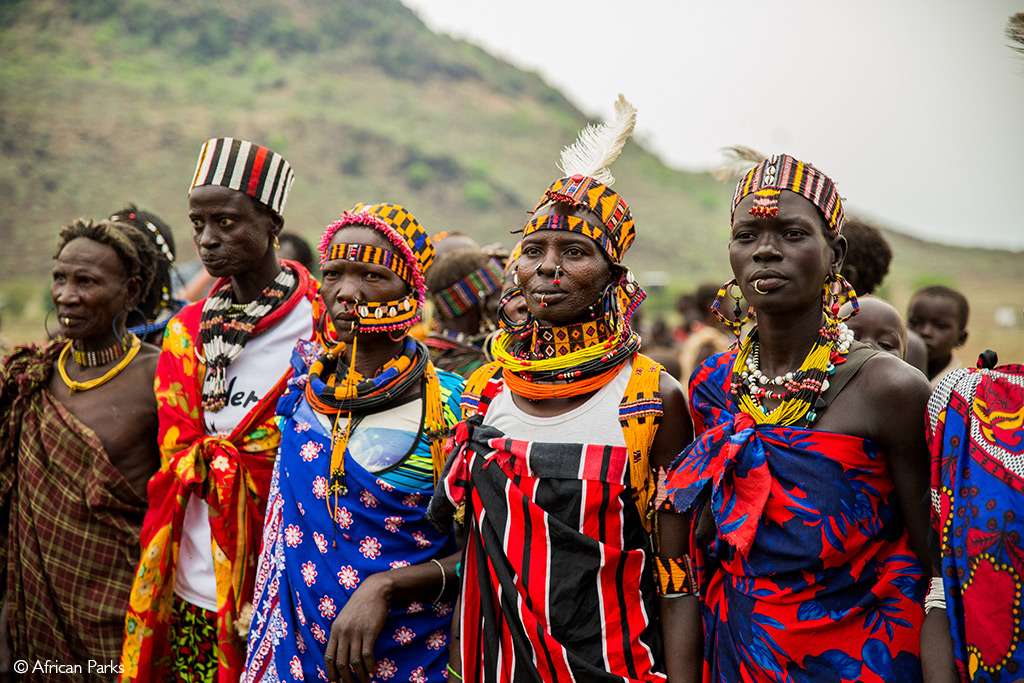
David continues: “Bizarrely, it’s because of the years of conflict in South Sudan that this mammal migration, along with millions of birds, fish and other species, has survived to the present day. The Sudd also has the biggest elephant and buffalo herds left in South Sudan. You could say this is the most exciting wildlife landscape left in the world – where else does abundance like this still exist?”
“It’s a positive, good news story for South Sudan, and the government is extremely supportive. But we will have to do things differently; half a million people live in and alongside the migration; we must preserve their traditions but also deal with their nomadic lifestyle and the ferocious tribal conflicts. This conservation project is going to test every system, every thought process and all our collective experience to the limit.”
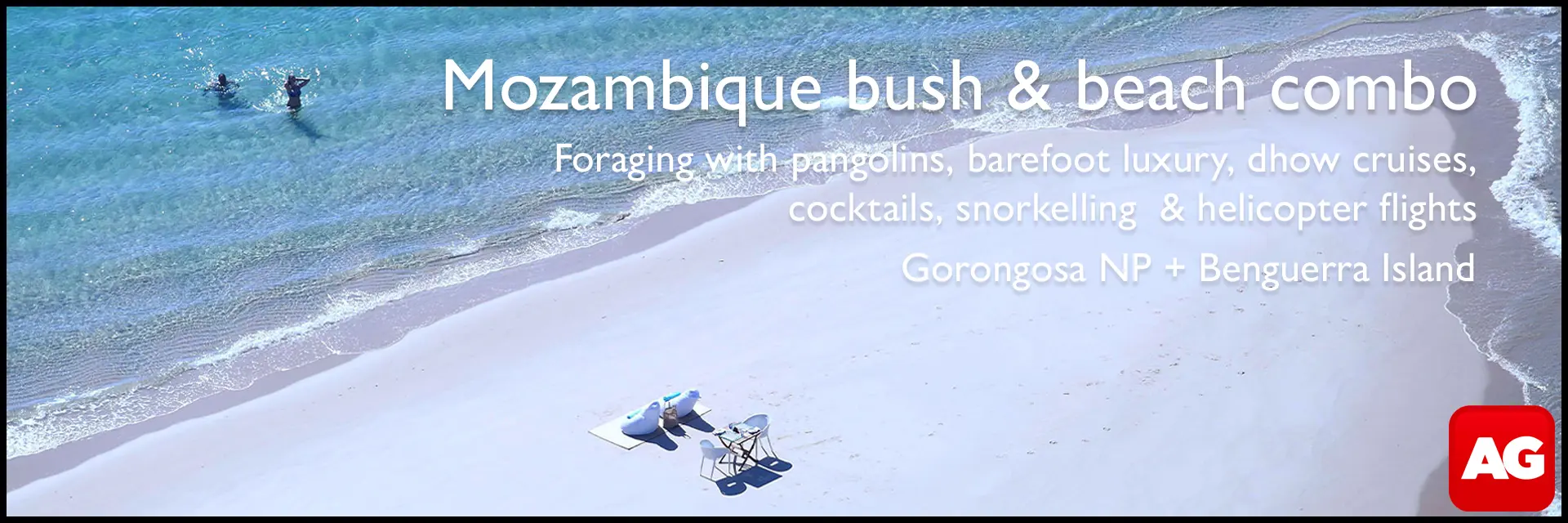
After a quick stop for basic supplies, we head to Badingilo National Park’s new HQ. “We’ve only just started construction, so don’t expect anything fancy,” warns David in farewell. The tall, lanky frame of Brigadier Zacharia Aleardo, long-standing warden of Badingilo, squeezes into Ross’ Defender. We last met in 2022, so it’s great to reconnect with him again as we negotiate more roadblocks on a newly built four-lane highway that follows the Nile. “Things have changed drastically in just one year since African Parks arrived,” the Brigadier tells us. “The aerial census shows us things we never knew, good management systems are now in place, and the rangers are being retrained and re-equipped – their motivation is much better.”

We arrive to a rough-and-tough welcome from Ops manager Thomas Barnes from the Western Cape and specialist ranger-trainer Aussie Jake Hickey, who, along with the Badingilo rangers, are living rough in a small bush camp as they construct the new park HQ. Already, they’ve hacked a 1,000-metre airstrip out of the scrub and built two massive aircraft hangers with 40-foot containers that will serve as the park’s offices and storerooms.
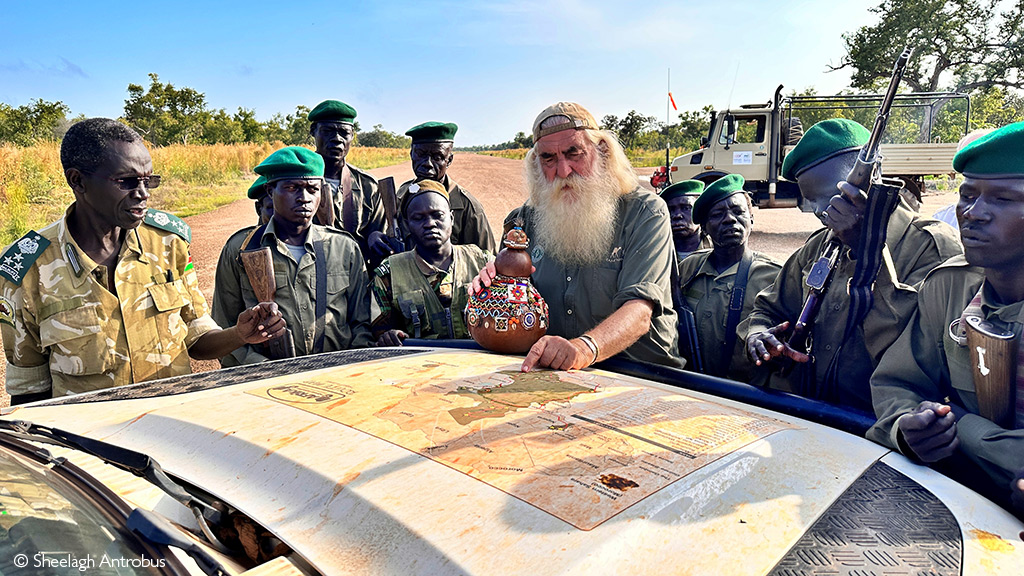
“We’ve slaughtered a cow for the rangers, and Jake, with his Oz outback experience, has removed the back-strap fillets for us,” says Thomas with a grin. Cooked over the coals, they’re delicious. Vultures flap and argue in trees surrounding the camp, launching raiding sorties to steal what they can. In between showing off his braaiing skills, Jake puts on his medic hat and doctors a nasty veld sore on Kingsley’s leg, as two orphaned baby banded mongoose – the camp’s loveable little mascots – scuttle between the mess tent and ranger camp begging for treats and tummy tickles.
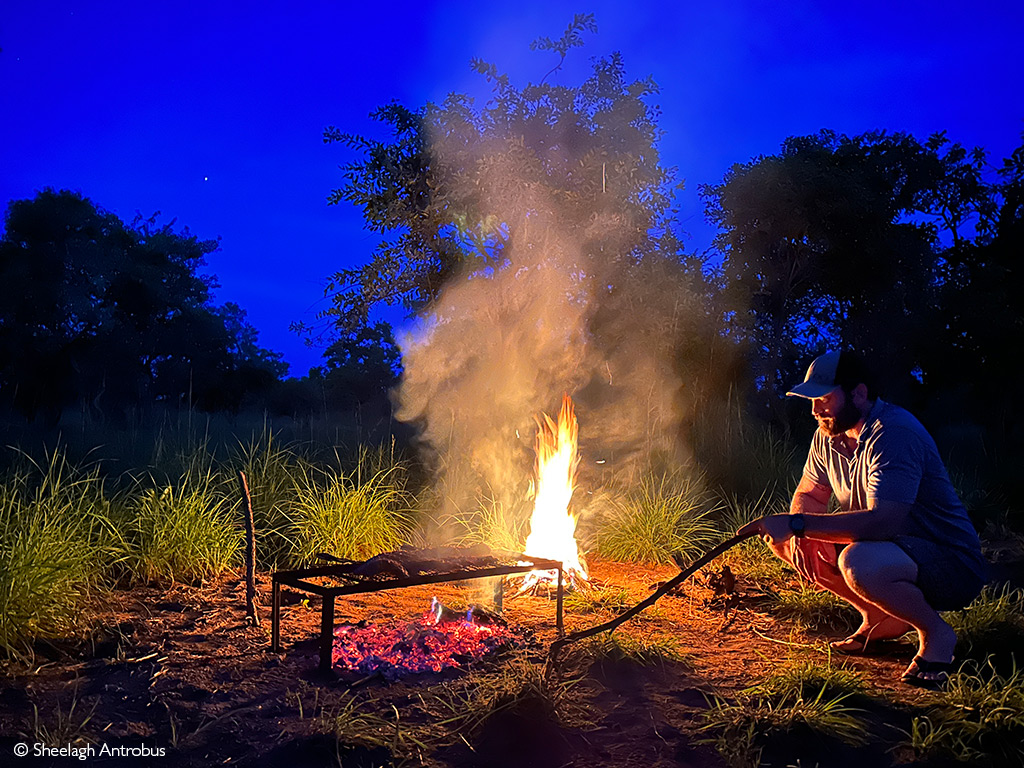
Mozzies arrive in squadrons as the sun goes down—it’s punishingly hot. The only respite is a 12v fan wired to a solar-powered battery or a dunk in a bucket of lukewarm water. We wet our kikois (Swahili cloth towels) to cool down, but we still sweat, toss, and turn all night and wake up at dawn to the buzzing sound of an aircraft coming in to land.
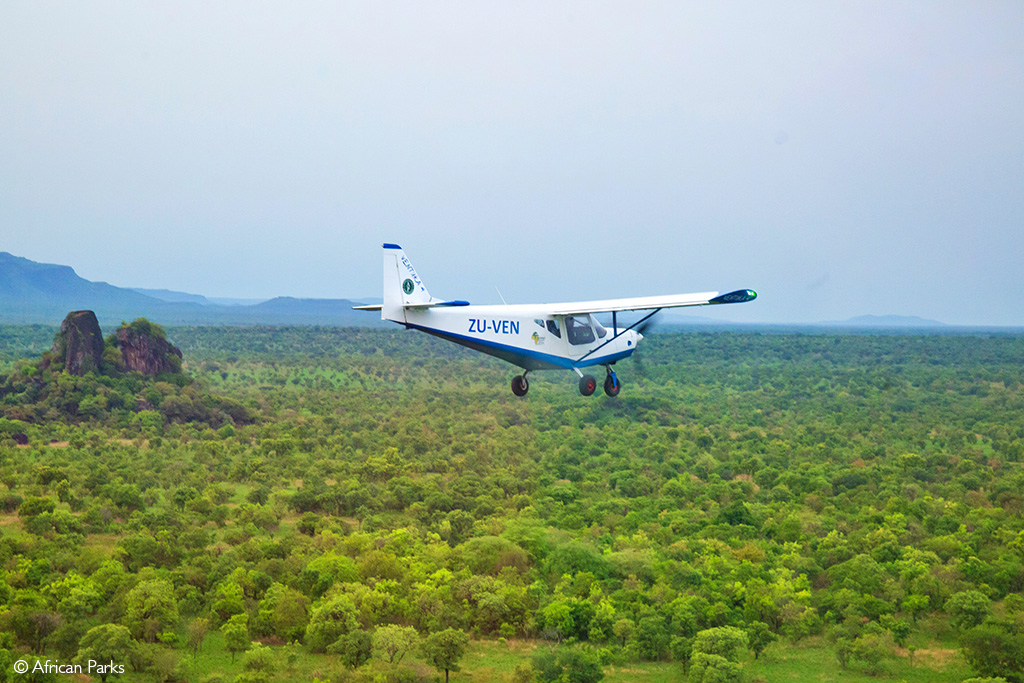
As it’s the rainy season, the plains that stretch between Badingilo and Boma have become vast swampy tracts – impassable by vehicle – the only way to see the migration is from the air. Ross squeezes into the loaded Cessna next to pilot Wim, who’s on a resupply 180-nautical-mile flight to Boma National Park near the Ethiopian border, for an overnight sortie, now weighed down by the expedition’s heavy Scroll for Conservation and a tiny backpack.
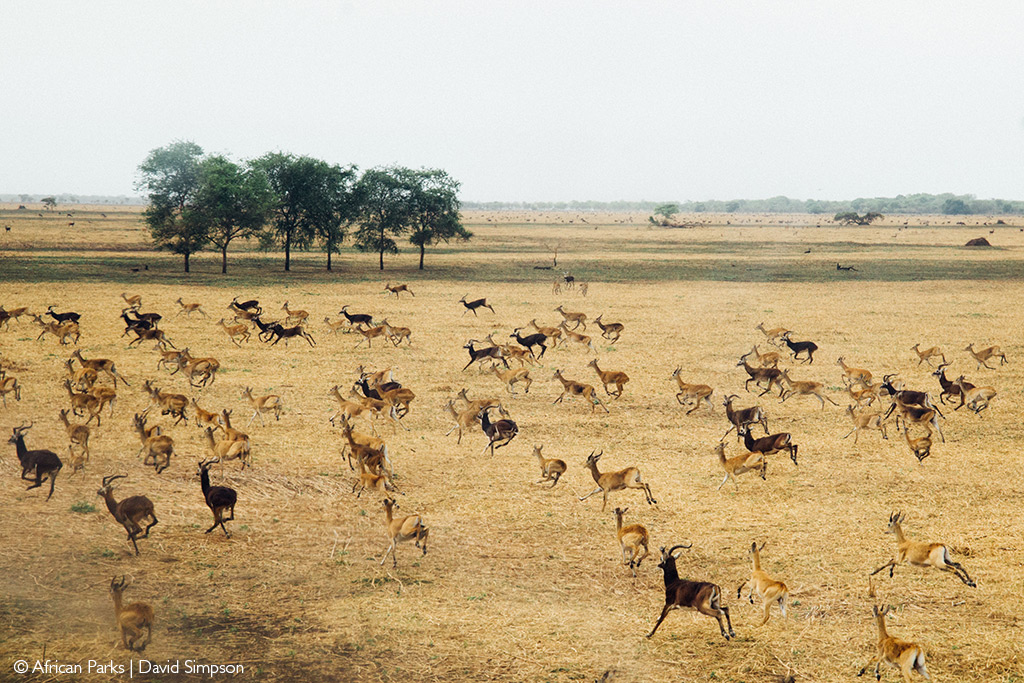
Another aircraft flies in; this time, it’s the park’s new two-seater Savannah single-prop plane. “These little planes have become important conservation tools all over Africa, and here, they’re the only way we can manage the vast distances of this region,” says Johandre, the pilot. “This conservation work with African Parks is a life’s dream, helping in my small way to preserve Africa’s wildlife – and it’s also a great adventure.”
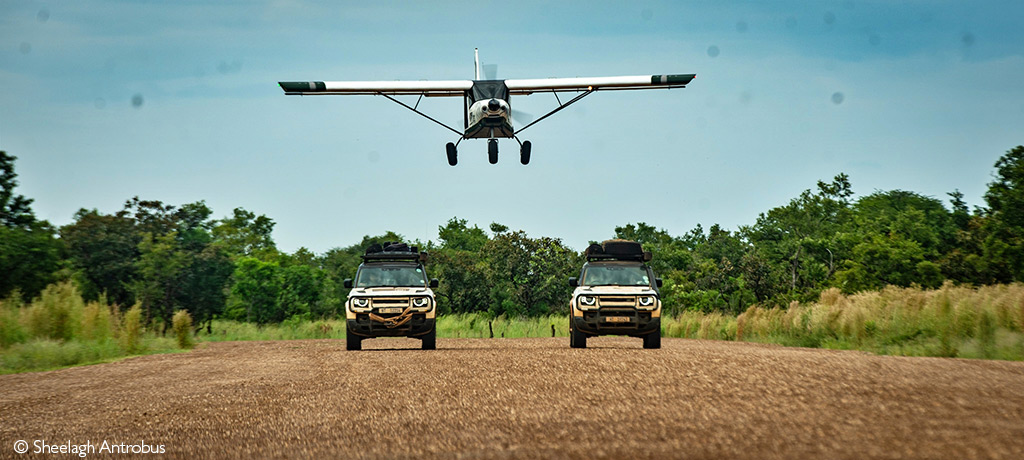

Early next morning, Kingsley is shoe-horned into the tiny plane, zips down the airstrip with doors off, and heads east into the rising sun. The endless, verdant green landscape dotted with thousands of glittering pools of water reveals itself. It’s breathtakingly beautiful – all the more so because it’s so unexpected. Then the migration comes into view: hundreds of Mongalla gazelle, tiang, Bohor reedbuck, Nubian giraffe and countless white-eared kob in family herds stretching as far as the eye can see.
Only from the air can we begin to understand the immensity of this magnificent landscape and why African Parks took on this mammoth challenge. But then the wind picks up to 25 knots, and the heat and thermals begin to bounce the little plane around – time to head back to base camp.
The heat and humidity are mind-numbing as we scribble first-hand stories from the Badingilo rangers in the battered expedition notebook and sort out the junk piled up in the expedition Defenders. Ross returns late in the day, full of tales from his time at Boma National Park. From a rudimentary bush kitchen, Richard, the Kenyan-born camp chef, produces delicious hamburger patties, homemade bread rolls and the best chips we’ve tasted in months – the starry sky is magnificent as we chew the fat with the Badingilo team.
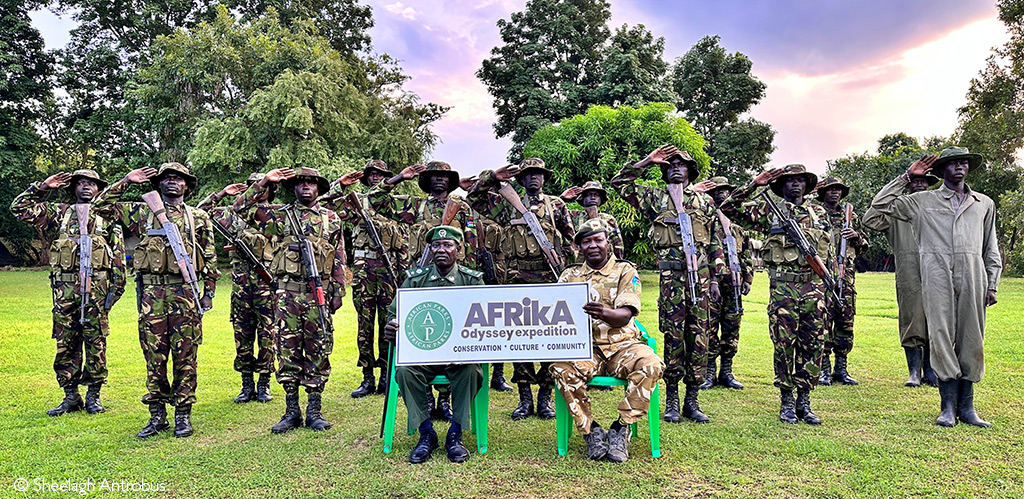
5am next morning, it’s Shee’s turn in the little Savannah – this time flying a circuitous route that flips over the migration and then follows the braided channels of the Nile to reach huge swamps and papyrus beds on the fringes of the Sudd. Friendly waves come from scatterings of people in wooden canoes threading through the wanderings of this, the longest and most historic river in the world that’s been our constant companion on this second chapter of the Afrika Odyssey expedition.
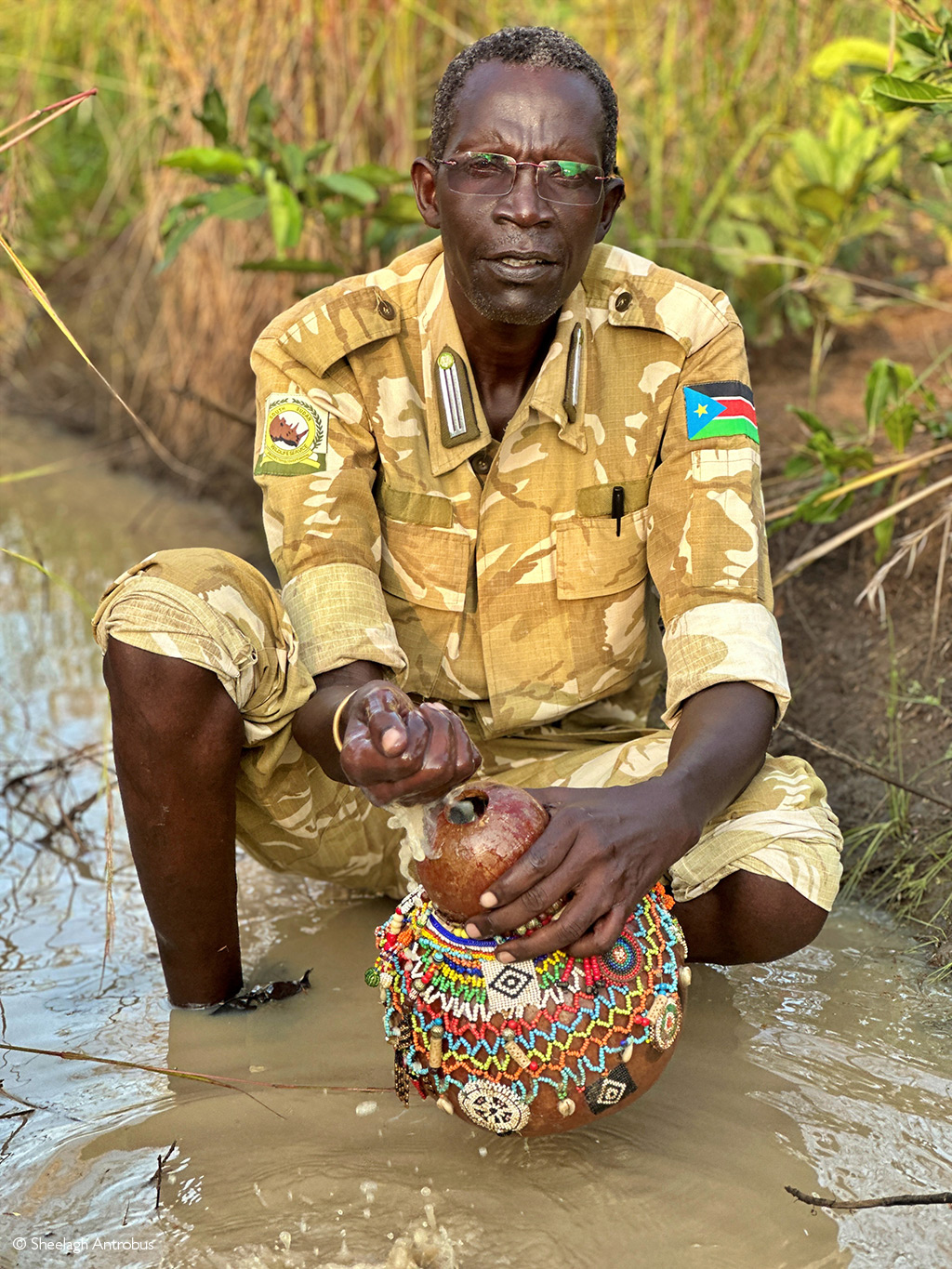
Touching down, the Badingilo rangers gather on the airstrip for a farewell team pic; Brigadier Zacharia is given the honour of adding symbolic South Sudan water to the expedition calabash, and then Johandre takes off again for a special flypast over the Defenders.
Our journey to South Sudan is nearly complete; we return to Juba, say our farewells to David and his tiny head office team, and pay a visit to the Department of Wildlife for the Director General to add his message for conservation to the expedition’s Scroll.
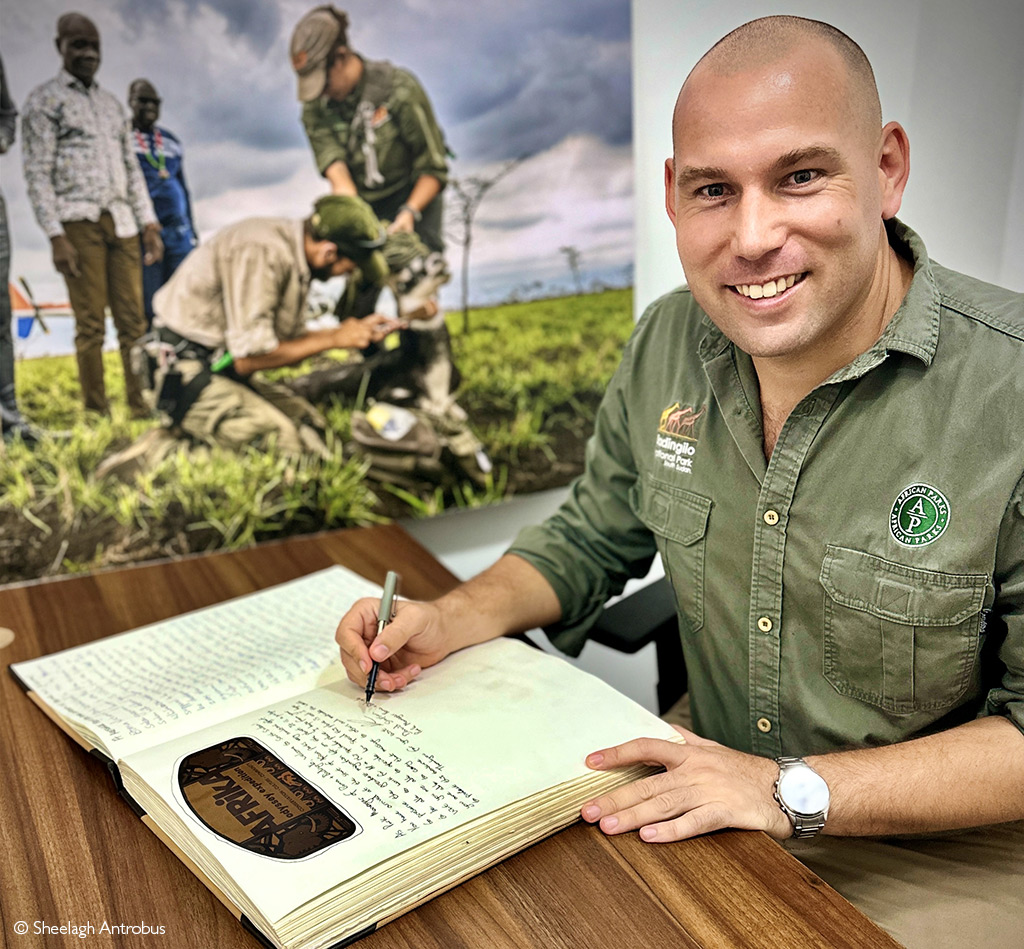

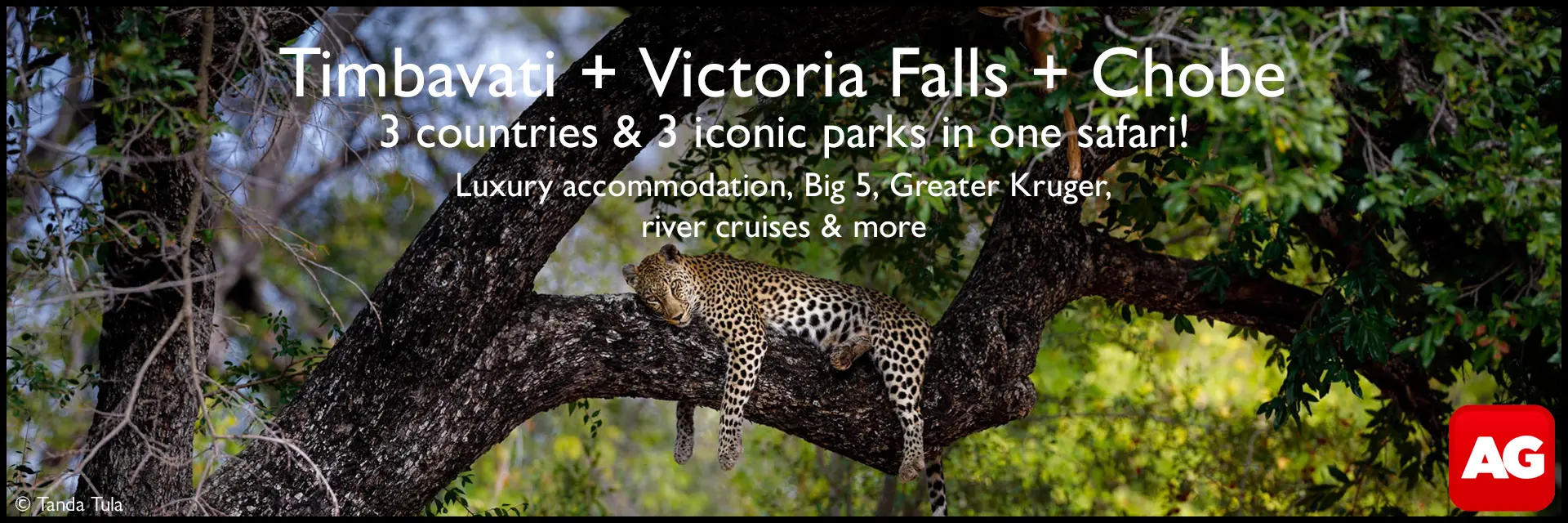
Diesel is cheaper here than in Uganda, so we pull into a petrol station to fuel our car. The 20-foot-high Dinka attendant with tribal scarifications on his face is fascinated by the new Defender 130s displaying the flags of the expedition countries. “Are you many in South Africa?” he asks Kingsley. “You mean Mzungus (white people)? Yup, we’re a tribe – like you,” the Beard replies. The attendant briefly studies Kingsley, then says respectfully, “You must be the tribal leader because only the most senior chief in our culture is allowed to have such a beard!”
We inch through a tuk-tuk traffic jam and cross the old Bailey bridge over the Nile for the final time. Rearmed with two soldiers back in the Defenders and new letters of permission to travel, we tackle the torturous road back to the Ugandan border. The military and police roadblocks are as belligerent as ever. Then, down comes the exit stamp – we’ve reached the expedition’s South Sudan turnaround point.
Ahead lies a long road – more malaria, torrential rains and mud – as we now turn westwards to complete the final seven African Parks-managed protected areas on the list. But for now, it’s Mission Accomplished for Chapter 2 of this fascinating conservation, culture and community-themed journey across Africa – we wouldn’t be anywhere else.
To comment on this story: Login (or sign up) to our app here - it's a troll-free safe place 🙂.![]()




